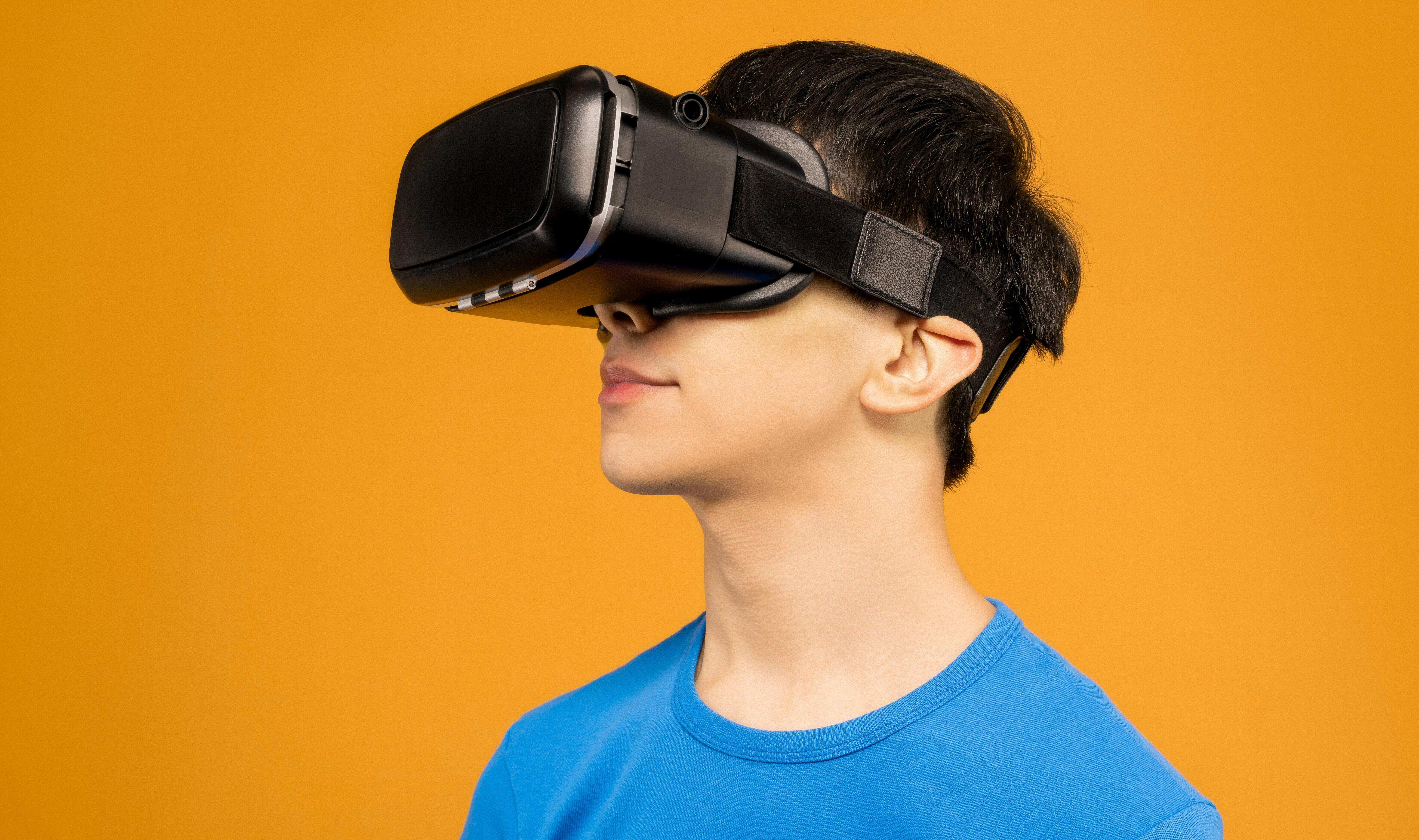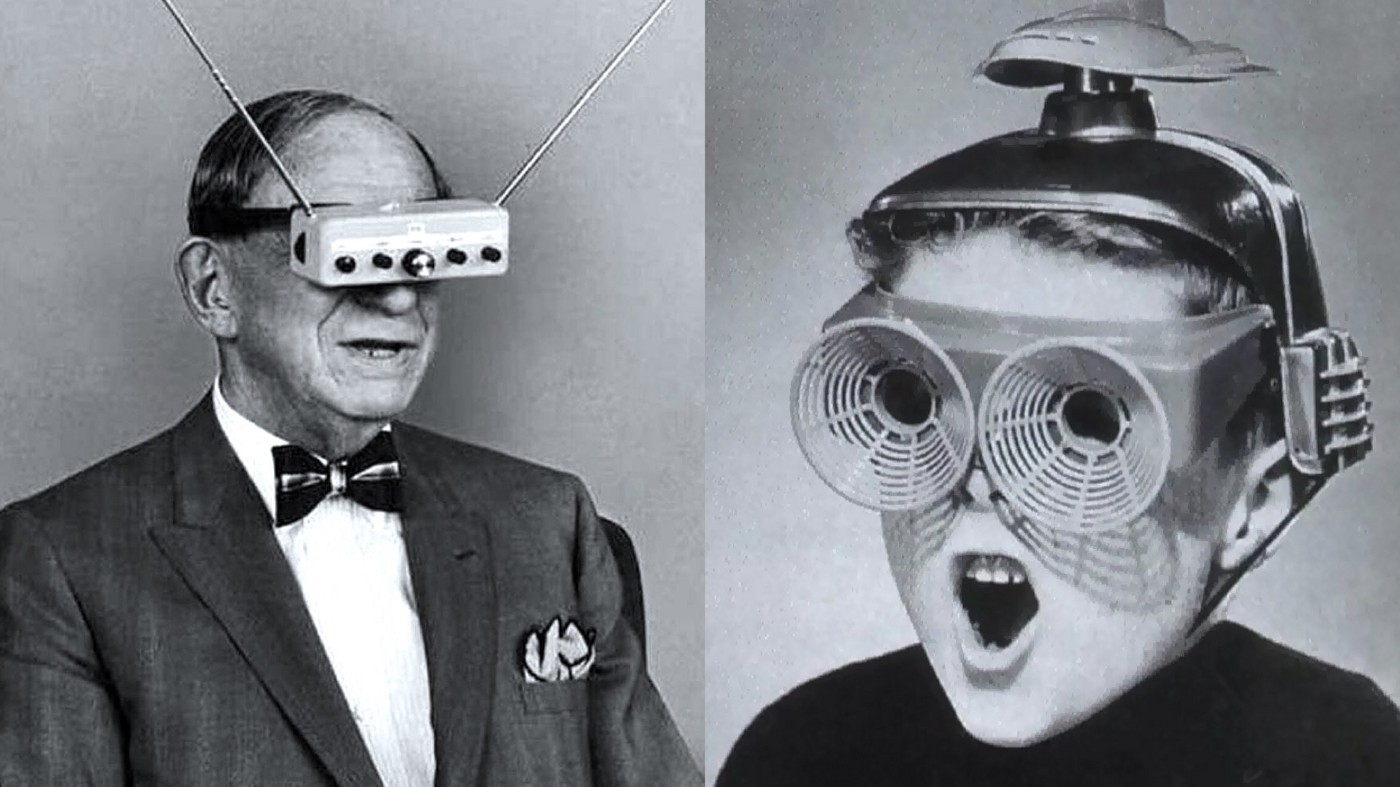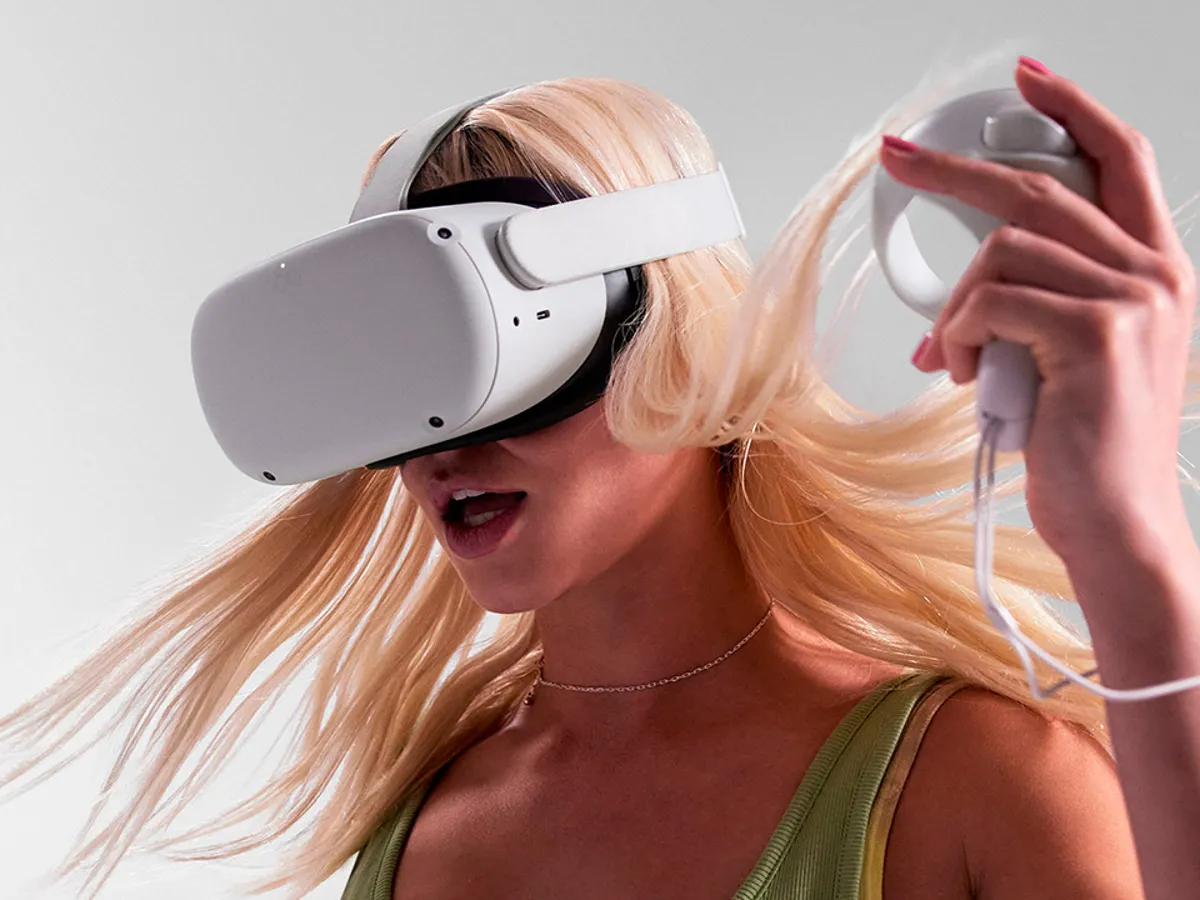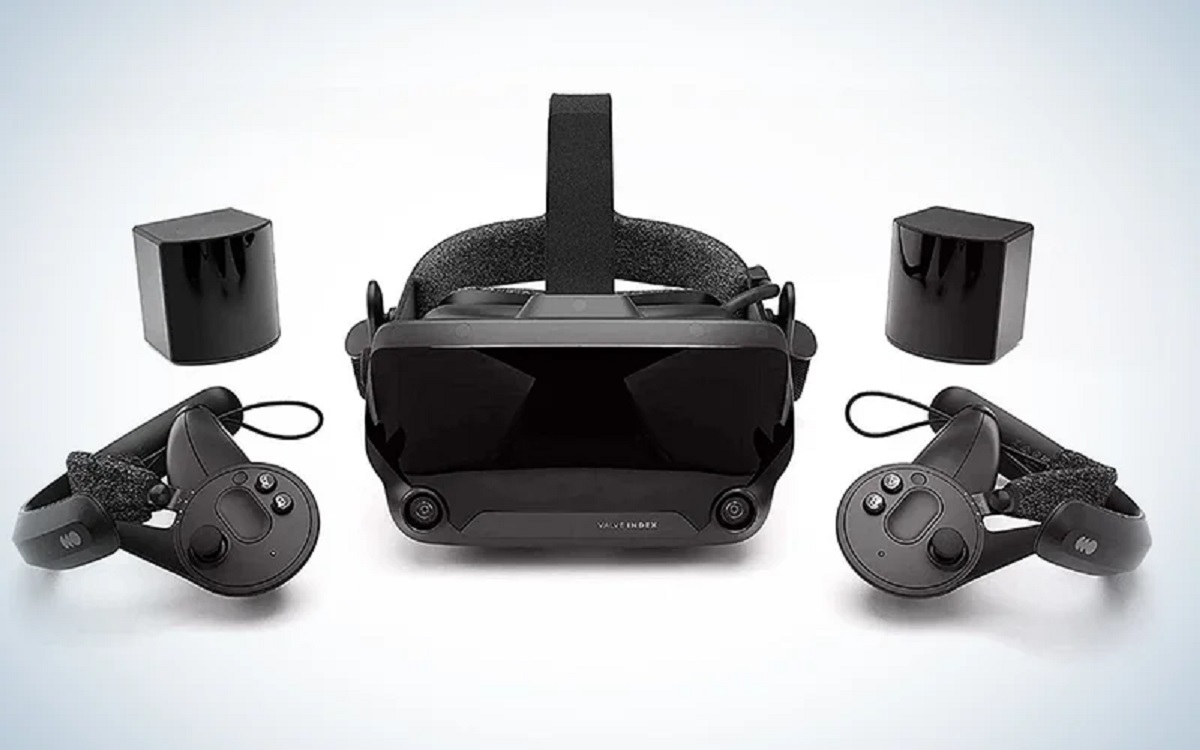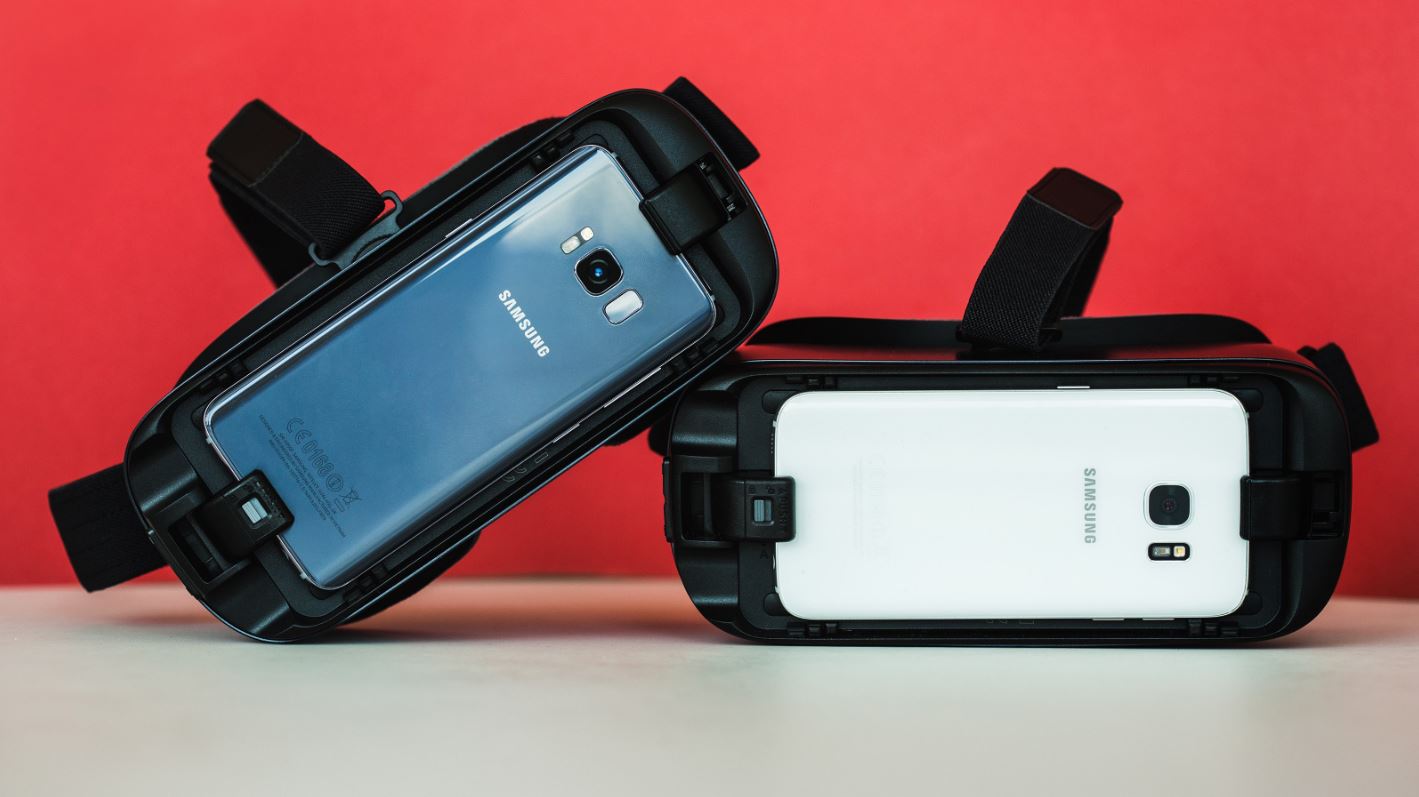Introduction
Welcome to the immersive world of virtual reality! With the advancements in technology, virtual reality has become more accessible and popular than ever before. A virtual reality headset allows you to step into a whole new dimension and experience a virtual environment as if you were truly there.
Whether you’re a gaming enthusiast, an avid traveler, or simply curious about this cutting-edge technology, using a virtual reality headset can transport you to places you’ve only dreamt of visiting. From exploring ancient ruins to diving deep into the ocean, the possibilities are endless.
In this article, we will guide you through the steps of using a virtual reality headset and help you make the most out of your virtual reality experience. We’ll cover everything from understanding what a virtual reality headset is to setting it up, navigating the virtual environment, and interacting with virtual reality content.
So, let’s dive in and discover the wonders that await you in the world of virtual reality!
What is a Virtual Reality Headset?
A virtual reality headset is a device that you wear on your head to immerse yourself in a virtual reality experience. It consists of a display screen, lenses, and sensors that track your head movements, allowing you to interact with a virtual environment in a realistic and immersive way.
The display screen inside the headset shows two slightly different images, one for each eye. This is known as stereoscopic vision and creates a sense of depth, making the virtual environment appear three-dimensional. The lenses in the headset help to focus the images and align them with your eyes, enhancing the quality of the visuals and making the experience more realistic.
Virtual reality headsets come in different shapes and sizes, but they all share the same goal of transporting you to a virtual world. Some headsets are standalone devices, meaning they have all the necessary components built-in, while others require a connection to a computer or smartphone to power the virtual reality experience.
One of the key components of a virtual reality headset is the tracking system. This allows the headset to track your movements and adjust the perspective of the virtual environment accordingly. There are different types of tracking systems, including inside-out tracking, which uses built-in sensors to track your movements, and outside-in tracking, which relies on external sensors placed in the room. Both methods provide accurate tracking, allowing for a more immersive experience.
Virtual reality headsets also often come with additional features such as built-in headphones or audio output, which further enhance the immersive experience by providing spatial audio that matches the visuals.
Now that you have a basic understanding of what a virtual reality headset is, let’s move on to exploring the different types of virtual reality headsets available.
Types of Virtual Reality Headsets
Virtual reality headsets come in various types, each offering a unique experience. Understanding the different types can help you choose the right headset that suits your needs and preferences. Here are some common types of virtual reality headsets:
-
PC-Based Virtual Reality Headsets
PC-based virtual reality headsets, such as the Oculus Rift and HTC Vive, require a powerful computer to deliver a high-quality virtual reality experience. These headsets offer top-notch graphics, precise tracking, and a wide range of compatible games and applications. They typically come with external sensors that need to be placed in the room for accurate tracking.
-
Standalone Virtual Reality Headsets
Standalone virtual reality headsets, such as the Oculus Quest and the HTC Vive Focus, are all-in-one devices that do not require a separate computer or smartphone to function. They have built-in processors, displays, and tracking systems, making them a portable and convenient option. Standalone headsets are great for beginners or those who want a hassle-free virtual reality experience.
-
Mobile Virtual Reality Headsets
Mobile virtual reality headsets, such as the Samsung Gear VR and Google Cardboard, use your smartphone as the display and processing unit. You simply insert your smartphone into the headset, and it uses the phone’s screen and sensors to create the virtual reality experience. Mobile headsets are affordable and easy to use, but the graphics and tracking capabilities may be limited compared to PC-based or standalone headsets.
-
Mixed Reality Headsets
Mixed reality headsets, such as the Microsoft HoloLens, blend the virtual world with the real world by overlaying virtual objects onto your surroundings. Unlike virtual reality headsets that completely immerse you in a virtual environment, mixed reality headsets allow you to interact with virtual objects while still being aware of your real-world surroundings.
Each type of virtual reality headset offers its own advantages and limitations, so it’s important to consider factors such as price, required setup, tracking capabilities, and the available library of compatible games and applications when choosing the right headset for you.
Now that you’re familiar with the different types of virtual reality headsets, let’s move on to setting up your virtual reality headset.
Setting Up Your Virtual Reality Headset
Setting up your virtual reality headset is an important step to ensure a smooth and enjoyable virtual reality experience. Here are the key steps to follow:
-
Clear Your Play Area
Before you start setting up your virtual reality headset, make sure you have enough space to move around freely. Clear any obstacles or fragile objects that could get in your way during your virtual reality session. It’s also a good idea to mark the boundaries of your play area, so you don’t accidentally bump into walls or furniture.
-
Connect the Headset
If you’re using a PC-based or standalone virtual reality headset, connect the necessary cables to your computer or gaming console. Follow the manufacturer’s instructions to ensure proper connection and compatibility.
-
Put on the Headset
Gently place the virtual reality headset on your head, ensuring that it sits comfortably and securely. Adjust the straps as necessary to achieve a snug fit.
-
Calibrate the Display
Many virtual reality headsets come with a calibration process to optimize the visuals for your eyes. Follow the on-screen instructions or use the accompanying software to calibrate the display, ensuring that the images align perfectly with your eyes.
-
Adjust the IPD
The interpupillary distance (IPD) is the distance between your eyes. It’s important to adjust the IPD settings on your virtual reality headset to match the distance between your eyes. This helps ensure a comfortable and realistic visual experience.
-
Check for Updates
Make sure to check for any firmware or software updates for your virtual reality headset. Keeping your headset up to date ensures that you have access to the latest features and improvements.
Once you have completed the setup process, you’re ready to start exploring the virtual reality world. Remember to take breaks if you start feeling discomfort or motion sickness, especially if you’re new to virtual reality. Gradually increase your usage time as you get more accustomed to the experience.
Now that you have set up your virtual reality headset, let’s move on to the next step – connecting your headset to your device.
Connecting Your Virtual Reality Headset to Your Device
Once you have set up your virtual reality headset, the next step is to connect it to your device. The connection process may vary depending on the type of headset you’re using. Here are the general steps to connect your virtual reality headset to your device:
-
PC-Based Virtual Reality Headsets
If you’re using a PC-based virtual reality headset, you will need to connect it to a compatible computer or gaming console. Most PC-based headsets use HDMI and USB cables to establish the connection. Plug one end of the HDMI cable into the graphics card port of your computer and the other end into the corresponding port on the headset. Then, plug the USB cable into a USB port on your computer.
-
Standalone Virtual Reality Headsets
Standalone virtual reality headsets, such as the Oculus Quest, don’t require a separate device for connection. Once you have set up the headset, you can use the built-in software to connect to Wi-Fi or other wireless networks. This allows you to download and install virtual reality apps, games, and experiences directly onto the headset without the need for additional devices.
-
Mobile Virtual Reality Headsets
For mobile virtual reality headsets, such as the Samsung Gear VR, the connection process involves inserting your smartphone into the headset. Open the virtual reality app on your smartphone and follow the on-screen instructions to connect to the headset. Make sure the smartphone is securely placed within the headset to avoid any disruption while using it.
-
Mixed Reality Headsets
Mixed reality headsets typically have their own setup and connection process. Follow the manufacturer’s instructions to connect the headset to your computer or other compatible devices. You may need to install specific software or drivers to establish the connection.
Once the connection is established, ensure that the device and headset are properly synced. Some headsets may require you to pair the devices using Bluetooth or other wireless technology. Follow the instructions provided by the headset manufacturer to complete the pairing process.
Now that you have successfully connected your virtual reality headset to your device, the next step is to adjust the settings for an optimal virtual reality experience.
Adjusting the Settings on Your Virtual Reality Headset
Adjusting the settings on your virtual reality headset is crucial to ensure a comfortable and immersive experience. Here are some key settings you should consider:
-
Display Settings
Take a moment to adjust the display settings of your virtual reality headset. This includes the brightness, contrast, and color calibration. These settings can vary depending on the specific headset model, so consult the manufacturer’s instructions or user manual for guidance on accessing and adjusting these settings.
-
IPD (Interpupillary Distance) Adjustment
Each person’s eyes are unique, so it’s important to adjust the IPD (Interpupillary Distance) settings on your virtual reality headset to match the distance between your eyes. This adjustment ensures that the virtual environment appears clear and in focus. Look for the IPD adjustment slider or dial on your headset and modify it until the visuals appear sharp and comfortable.
-
Audio Settings
If your virtual reality headset includes built-in headphones or speakers, you may need to adjust the audio settings for optimal sound quality. Some headsets also offer spatial audio, which provides a three-dimensional sound experience. Experiment with the audio settings to find a balance between immersion and comfort.
-
Motion and Tracking Settings
Check the motion and tracking settings on your virtual reality headset to ensure accurate movement detection. Depending on the headset, you may have options to adjust the sensitivity or recalibrate the sensors. Properly configured motion and tracking settings can help reduce motion sickness and enhance the overall experience.
-
Comfort Settings
Virtual reality experiences can vary in intensity, and some individuals may be more prone to discomfort or motion sickness. Many virtual reality headsets offer comfort settings that can help alleviate these issues. These settings might include options to reduce or disable certain visual effects, adjust the field of view, or enable a comfort mode that minimizes motion-induced discomfort.
Remember, everyone’s preferences and tolerance levels are different, so take the time to experiment with the various settings and find what works best for you. If you experience any discomfort or motion sickness while using your virtual reality headset, consider making adjustments to the settings mentioned above.
Now that you have adjusted the settings on your virtual reality headset, it’s time to explore and navigate the immersive virtual reality experiences that await you.
Navigating the Virtual Reality Experience
Once you’re fully immersed in a virtual reality environment, it’s important to know how to navigate and interact with the content. Here are some key tips for navigating your virtual reality experience:
-
Movement
Movement in virtual reality can vary depending on the experience and the type of virtual reality headset you’re using. Some experiences may allow you to physically move around your play area, while others may require you to use a controller or hand gestures to navigate. Follow the instructions provided within each virtual reality experience to understand how movement works.
-
Teleportation
In many virtual reality experiences, teleportation is used as a common method of moving from one location to another. This involves pointing at a desired spot in the virtual environment and selecting it to instantly teleport to that location. This method allows for seamless movement without requiring physical walking or extensive space.
-
Menu Interactions
Virtual reality experiences often have menus or interfaces that allow you to access different options, settings, or activities. To interact with these menus, you can use controllers, hand gestures, or gaze-based interactions depending on the capabilities of your headset. Pay attention to the on-screen instructions or follow the intuitive cues to navigate through the menus and select desired options.
-
Gaze-Based Interactions
Gaze-based interactions involve looking at an object or button within the virtual environment to interact with it. Simply focus your gaze on the desired object or button for a few seconds to trigger the action. This method is commonly used for selecting objects, activating controls, or initiating interactions within the virtual reality experience.
-
Controllers and Hand Gestures
If your virtual reality headset comes with handheld controllers, follow the instructions to learn how to use them for navigation and interactions. These controllers can provide a more immersive and tactile experience, allowing you to manipulate objects or perform specific actions within the virtual world. Hand gestures may also be recognized by certain headsets, enabling you to interact with the virtual environment using natural movements.
Remember to take breaks if you start feeling any discomfort or motion sickness, especially if you’re new to virtual reality. Gradual exposure and practice will help you become more comfortable and proficient in navigating the virtual reality experiences.
Now that you’re familiar with navigating the virtual reality experience, let’s move on to exploring how to interact with virtual reality content.
Interacting with Virtual Reality Content
Interacting with virtual reality content is an exciting part of the overall experience. It allows you to engage with the virtual environment, manipulate objects, and participate in various activities. Here are some ways to interact with virtual reality content:
-
Object Manipulation
Virtual reality experiences often involve picking up and manipulating objects within the virtual environment. Depending on the virtual reality system you’re using, this can be done through handheld controllers, hand gestures, or even using your physical hands in some cases. Follow the on-screen instructions or intuitively interact with the objects within the virtual environment to explore and interact with them.
-
Environmental Interactions
Virtual reality content may provide opportunities for you to interact with the virtual world itself. This may include pressing buttons, flipping switches, opening doors, or solving puzzles within the virtual environment. Look for interactive elements in the environment and use the available methods of interaction, such as hand gestures or controller inputs, to engage with them.
-
Communication and Social Interactions
Some virtual reality experiences offer the ability to communicate and interact with other users who are also in the virtual environment. This can be through voice chat, text chat, or interactive gestures. Engage with others, collaborate on tasks, or simply socialize within the virtual reality space, depending on the specific experience you’re using.
-
Gameplay and Actions
If you’re playing virtual reality games, there may be specific actions and gameplay mechanics involved. This might include shooting targets, driving vehicles, or performing specific gestures to trigger certain actions. Pay attention to the game instructions and use the provided input devices, such as controllers or hand gestures, to engage with the game mechanics and progress through the gameplay.
-
Exploration and Observation
Virtual reality often provides an immersive environment for exploration and observation. Take your time to explore the virtual spaces, observe the details, and immerse yourself in the surroundings. Look for hidden interactions, points of interest, or storytelling elements within the virtual world to fully engage with the content.
Remember that each virtual reality experience may have its own unique ways of interaction. Take the time to familiarize yourself with the specific instructions, controls, and gestures within each experience to fully unleash the potential of interacting with the virtual world.
Now that you’re equipped with knowledge on interacting with virtual reality content, let’s move on to some tips and tricks to enhance your virtual reality experience.
Tips and Tricks for Using a Virtual Reality Headset
Using a virtual reality headset can be an incredible experience, but it’s important to keep some tips and tricks in mind to enhance your overall enjoyment and safety. Here are some helpful tips for using a virtual reality headset:
-
Start Slowly
If you’re new to virtual reality, start with shorter sessions and gradually increase the duration as you get more accustomed to the experience. This can help prevent motion sickness and allow your body to adjust to the virtual environment.
-
Clear Your Space
Make sure you have enough space to move around comfortably and safely. Remove any objects or obstacles in your play area that could obstruct your movements. Creating a clear and clutter-free space will help prevent accidents or collisions.
-
Take Regular Breaks
Virtual reality can be immersive, but it’s important to take regular breaks to give your mind and body a rest. Extended use can lead to eye strain, fatigue, and discomfort. Take breaks every 30 minutes to an hour, and use this time to stretch, hydrate, and rest your eyes.
-
Adjust the Straps and Fit
Ensure that the headset is properly adjusted and fits comfortably on your head. Tighten or loosen the straps to find the right balance between comfort and stability. A well-fitted headset will enhance your overall experience and prevent it from slipping or moving during use.
-
Follow Health and Safety Guidelines
Virtual reality should be enjoyed responsibly. Follow the health and safety guidelines provided by the manufacturer, especially regarding age limitations, recommended usage times, and any specific health conditions or concerns that may impact your virtual reality experience.
-
Consider Eye Comfort
Virtual reality headsets place screens very close to your eyes. Remember to blink regularly and give your eyes breaks to prevent dryness and fatigue. If you wear glasses, consider using specially designed lens inserts or finding a headset that accommodates glasses comfortably.
-
Try Different Experiences
Don’t limit yourself to just one type of virtual reality experience. Explore a variety of games, apps, and simulations to fully enjoy the potential of virtual reality. Whether it’s exploring new environments, playing interactive games, or learning through educational simulations, the possibilities are endless.
-
Keep Your Virtual Reality System Updated
Regularly check for software updates for your virtual reality headset and associated applications. Updates often provide bug fixes, performance improvements, and access to new features or content. Keeping your system up to date ensures that you have the best virtual reality experience possible.
By following these tips and tricks, you can optimize your virtual reality experience and ensure a safe and enjoyable time exploring the virtual world.
Now that you’re equipped with these helpful tips, you’re ready to embark on your virtual reality adventures. Have fun and make the most out of your virtual reality headset!
Conclusion
Virtual reality headsets have revolutionized the way we experience digital content. They transport us to virtual worlds, allowing us to explore, interact, and immerse ourselves in ways previously unimaginable. By understanding what a virtual reality headset is and the different types available, you can choose the right headset that aligns with your interests and needs.
Setting up your virtual reality headset properly and adjusting the settings ensures optimal comfort and a seamless experience. Connecting your headset to your device and navigating the virtual reality environment opens up a universe of possibilities. Interacting with virtual reality content enables you to engage with the virtual world, manipulate objects, and participate in various activities.
As you embark on your virtual reality journey, remember these tips and tricks. Take it slow, create a clear play area, and take regular breaks to prevent discomfort or fatigue. Adjust the straps and fit of your headset for optimal comfort and stability. Keep up with software updates to enjoy the latest features and improvements.
Virtual reality is a realm of endless possibilities and thrilling adventures. It’s a gateway to explore new worlds, challenge your gaming skills, learn, and connect with others. Embrace the technology, let your imagination run wild, and enjoy the captivating experiences that virtual reality offers.
So, put on your virtual reality headset, step into the virtual world, and get ready for an extraordinary journey that awaits you!









